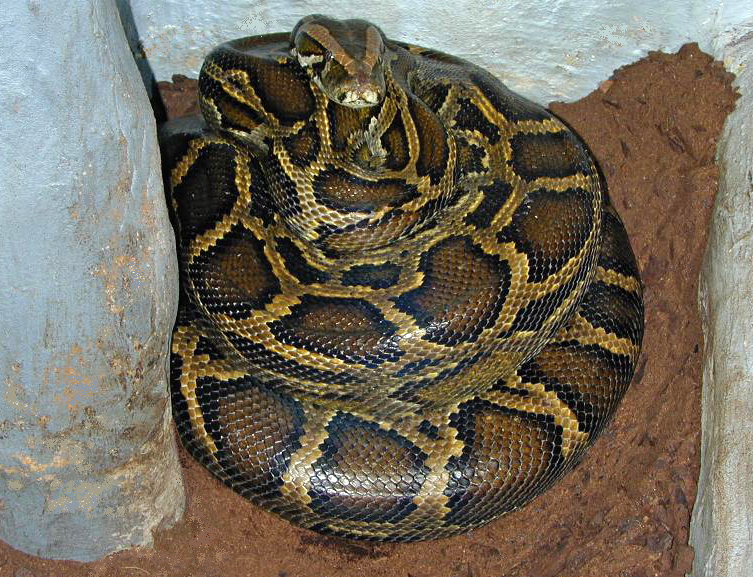The Burmese python, one of the world's largest snakes, is native to Southeast Asia and considered vulnerable due to habitat loss and the pet trade. Previously considered a subspecies of the Indian python, it was reclassified as a separate species in 2009. Its presence in Florida is attributed to released or escaped pets, posing a threat to the local ecosystem.
1992: Hurricane Andrew and Python Escape
Hurricane Andrew in 1992 destroyed a python breeding facility, causing the escape of many snakes into the Everglades.
1996: Rise of the Pet Trade
The Burmese python gained popularity in the pet trade between 1996 and 2006, leading to a surge in imports to the U.S.
1999: Heaviest Snake Recorded
In 1999, a captive Burmese python named "Baby" held the record for the heaviest snake, weighing 182.8 kg.
2003: Population Decline Surveys Begin
Road surveys to monitor the decline in bobcat populations began in 2003, revealing an 87.3% decrease by 2011.
2006: Rise of the Pet Trade
The Burmese python gained popularity in the pet trade between 1996 and 2006, leading to a surge in imports to the U.S.
2007: Expansion into New Territories
By 2007, Burmese pythons were found in northern Florida and the Florida Panhandle.
2008: Breeding for Leucistic Morph
Breeders successfully reproduced the leucistic Burmese python, a rare white morph, in captivity around 2008-2009.
2009: Breeding for Leucistic Morph
Breeders successfully reproduced the leucistic Burmese python, a rare white morph, in captivity around 2008-2009.
2009: Species Distinction
In 2009, the Burmese python was recognized as a distinct species, separate from the Indian python.
2011: Population Decline Surveys Begin
Road surveys to monitor the decline in bobcat populations began in 2003, revealing an 87.3% decrease by 2011.
2011: Impact on Bird Species
By 2011, researchers found remnants of 25 bird species in the digestive tracts of Burmese pythons, highlighting their impact on native bird populations.
January 2012: Import Ban
In January 2012, the U.S. banned the importation of Burmese pythons due to their impact on the ecosystem.
2012: Vulnerable Status
The Burmese python was classified as vulnerable on the IUCN Red List in 2012 due to a significant population decline.
2013: Python Challenge
The first Python Challenge was held in 2013 to raise awareness about the invasive species and remove pythons from the Everglades.
2017: Hybrid Discovery
A 2017 genetic study revealed that the Florida Everglades python population consists of hybrids between Burmese and Indian pythons.
2017: New Detection Method
A 2017 study proposed a new method for detecting Burmese pythons in Florida: analyzing mosquito blood for their DNA.
April 2019: Large Python Capture
In April 2019, a massive Burmese python, measuring over 5.2 meters and carrying 73 eggs, was captured in Florida's Big Cypress National Preserve.
December 2021: Record-Breaking Egg Count
A Burmese python captured in December 2021 set a record for the number of developing eggs, with 122 found inside.
July 2023: Record-Breaking Capture
July 2023 marked the capture of the longest Burmese python on record, measuring 5.79 meters, in South Florida's Big Cypress National Preserve.
July 2023: Another Record-Breaking Capture
July 2023 saw the capture of a 5.8-meter-long Burmese python in Florida's Big Cypress National Preserve.
2023: Annual Python Challenge
The Python Challenge, now an annual event, resulted in the removal of 209 pythons in 2023.
